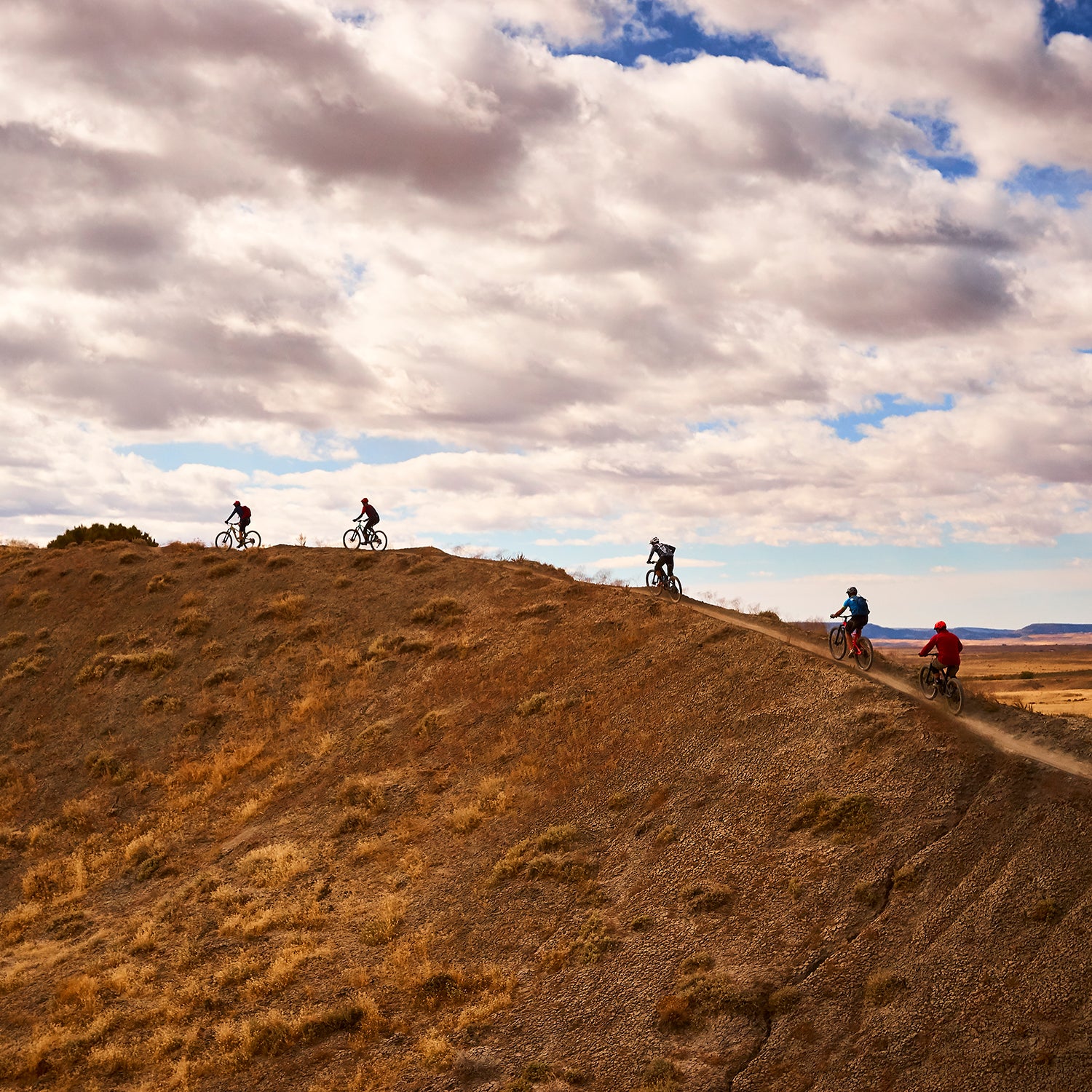Mike Bennett, the city manager of Fruita, Colorado, was camped out at 18 Road, a popular mountain-bike trailhead, when I called him on a Tuesday morning last spring. Over the howl of desert wind, he told me that the place was pretty much empty. “I’m staring around in the dispersed area, there’s no one here,” he said.
Spring is usually a��high season for this��western Colorado town. Bikers flood the area after ski resorts close��and before��temperatures spike. Bennett says they’ve historically seen a 25 percent rise in sales-tax revenue each��spring and��fall, thanks to visitors. And over the past few years, as the area has focused on recreation, that revenue has gone up a further 12 percent��year over year.
But in 2020, as COVID-19 cases climbed across the country, Fruita��and other outdoor hot spots across the West began��telling people not to come, shutting off the valve to tourism. While some businesses like bike shops stayed busy with locals, lodging revenue dropped by more than half, hitting the city’s bottom line.��
Fruita��has grown to count on a booming outdoor recreation economy after shifting away from the bust of oil and gas (when oil- and gas-industry prices dove in 2014, the result of��a sales-tax revenue in Fruita dropped 90 percent)—and it isn’t alone in its dependence on tourism. But��the pandemic and economic fallout that followed are both making it clear that recreation, which is , is volatile, too, reliant upon��unsteady markets and personal whims.
Megan Lawson, an economist who leads outdoor recreation, economic development, and demographics for Headwaters Economics, a nonprofit think tank that looks at economics and land use, says that recreation towns are triply sensitive to the impacts of the pandemic. Fruita’s Mesa County has been relatively healthy, but across the country, recreation counties��suffered��COVID-19 than non-recreational rural counties, because they’re hubs for travelers��and full of essential workers. A lot of those places are already deeply unaffordable, and residents are barely making enough to pay for housing when they’re healthy and work is busy.
And now, because they’re so often dependent on a single-source seasonal economy, across the country are suffering. Lamoille County, Vermont, home to ski areas Smugglers’��Notch��and Stowe, saw unemployment rise to��25.4 percent��in April after the��ski season abruptly shut down��the month before. That same month,��in Cheboygan County, Michigan, where boating and fishing drive business, unemployment was a dismal 41.2 percent, the highest in the country. Simultaneously, Grand County, Utah, home to Moab, a destination��often held up as the model for a thriving recreation economy, was at 26.9 percent unemployment.
There’s a long history of rural areas relying on one unstable source of income��and on the desirability of natural resources. In places from Appalachian coal country to western oil and gas towns, the outdoor industry was supposed to be a sustainable alternative to extraction. But in the face of crisis, the narrative about the stability of tourism is proving to be false. “I think the analogue to the extractive economy is dead-on,” Lawson says. “I don’t want to be doomsday, but it is bleak right now, so we have to think about outdoor recreation as another economic specialization that’s vulnerable to boom-and-bust��and think about long-term diversification.”
No one was particularly well prepared for a pandemic, but the tourism industry, with its dependence on visitors and discretionary spending, is highly vulnerable. “In the national unemployment numbers, a lot of this is being focused in the service industry,” Lawson says. “Hospitality, restaurants, hotels, guiding services all took the initial hits, then economists were��predicting ripples that spread through the economy.”
The ripples are where vulnerability gets tricky in tourist towns. Tax revenues that��fund things like hospitals and social services come from local sales, so��when visitors don’t come, it impacts more than just the hospitality industry. In Fruita, Bennett says the community is split between two��fears: opening too quickly and staying closed.��
Jordan Smith, director of the Institute of Outdoor Recreation and Tourism at Utah State University and cofounder of��the new Gateway and Natural Amenity Region Initiative, created to bring recreation-gateway towns together to share tactics, says there’s no single good answer for how to deal with��this pandemic��and how to make outdoor towns more resilient in the future. It’s forcing hard conversations��about ways��to diversify their income streams. They have to acknowledge that recreation is not a panacea��and that there are hard things that come with the outsize��power of visitors there for the outdoors.
“Tourism is boom-and-bust, and this is the first time it has been bust in those communities for a long time,” Smith says. “So many wanted to move into recreation as fast as possible, they didn’t put as much thought into what that might mean long-term or the resilience of their economy when something like that happens.”
Smith says such towns��have to diversify and build up secondary economies. The places in their network, from Page, Arizona, to Park City, Utah, have seen that they can’t just play off parks��or wilderness. The pandemic has shown that the things that make those destinations��appealing, like lack of industry��and minimal infrastructure, are also what make��them fragile. On the upside, the pandemic has created pathways to economic��diversity��by highlighting the value of remote work and the idea that cities don’t necessarily need to be the nation’s��sole economic hubs.
An hour south of Fruita, in another western Colorado town that’s moved away from extraction, a more diverse outdoor economy has held up. Montrose has found ways to address immediate needs��and to be stable in the longer term.
Chelsea Rosty, the city’s director of business innovation and tourism, says that when COVID-19 hit, Montrose��pivoted funds previously earmarked for tourism into zero-interest loans for small businesses, which helped stanch the fallout of lost income.
The city already had a to pull in outdoorsy businesses, like fly-fishing gear manufacturer , and to target companies that might be swayed by outdoor access when deciding��where to set up shop. Rosty says that now the city is investing in housing and hiring local contractors to��help with��the��recovery. Montrose has also formed a regional collaboration with nearby towns like Ouray��in an��attempt to convince��residents to travel locally and inject outside dollars into small towns.
There are pains that come with growing and changing, like wage gaps and housing shortages, and like Smith says, there’s no single answer that works for everyone, but a lot about Montrose’s plan is replicable: invest in the area around you, don’t be precious about��the places you love, and��be amenable to change.


